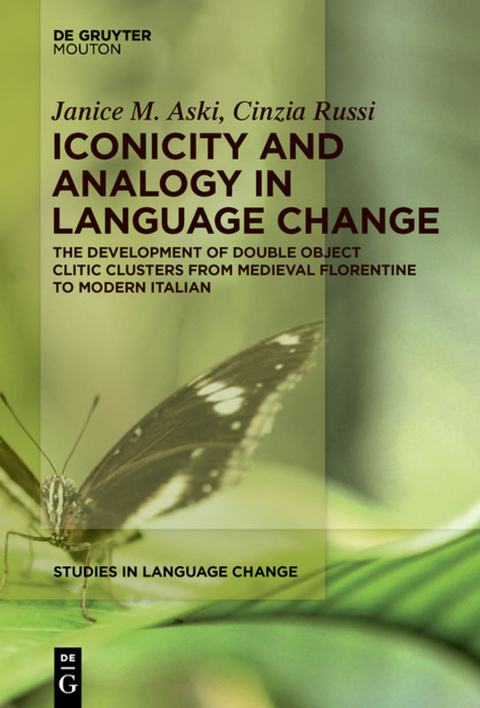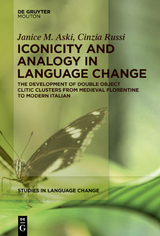Iconicity and Analogy in Language Change
The Development of Double Object Clitic Clusters from Medieval Florentine to Modern Italian
Seiten
2015
de Gruyter Mouton (Verlag)
978-1-61451-752-8 (ISBN)
de Gruyter Mouton (Verlag)
978-1-61451-752-8 (ISBN)
Examines the alternation between accusative-dative and dative-accusative order in Old Florentine clitic clusters and its decline in favor of the latter. Based on an exhaustive analysis of data from medieval Florentine and Tuscan texts, this volume offers an analysis of the rise of the variable order, the transition from one order to the other.
This book examines the alternation between accusative-dative and dative-accusative order in Old Florentine clitic clusters and its decline in favor of the latter. Based on an exhaustive analysis of data collected from medieval Florentine and Tuscan texts we offer a novel analysis of the rise of the variable order, the transition from one order to the other, and the demise of the alternation that relies primarily on iconicity and analogy.The bookemploys exophoric pragmatic iconicity, a language-external iconic relationship based on similarity between linguistic structure and the speaker/writer's conceptualization of reality, and endophoric iconicity, a language-internal iconic relationship where the iconic ground is construed between linguistic signs and structures. Analogy is viewed as a productive process that generalizes patterns or extends grammatical rules to formally similar structures, and obtains the form of the analogical relationship between the masculine singular definite article and the third person singular accusative clitic, which shared the same phonotactically constrained distribution patterns. The data indicate that exophoric pragamatic iconicity exploits and maintains the alternation, whereas endophoric iconicity and analogy conspire to end it.
This book examines the alternation between accusative-dative and dative-accusative order in Old Florentine clitic clusters and its decline in favor of the latter. Based on an exhaustive analysis of data collected from medieval Florentine and Tuscan texts we offer a novel analysis of the rise of the variable order, the transition from one order to the other, and the demise of the alternation that relies primarily on iconicity and analogy.The bookemploys exophoric pragmatic iconicity, a language-external iconic relationship based on similarity between linguistic structure and the speaker/writer's conceptualization of reality, and endophoric iconicity, a language-internal iconic relationship where the iconic ground is construed between linguistic signs and structures. Analogy is viewed as a productive process that generalizes patterns or extends grammatical rules to formally similar structures, and obtains the form of the analogical relationship between the masculine singular definite article and the third person singular accusative clitic, which shared the same phonotactically constrained distribution patterns. The data indicate that exophoric pragamatic iconicity exploits and maintains the alternation, whereas endophoric iconicity and analogy conspire to end it.
Janice M. Aski, The Ohio State University, USA; Cinzia Russi, University of Texas at Austin, USA.
| Reihe/Serie | Studies in Language Change [SLC] ; 13 |
|---|---|
| Verlagsort | New York |
| Sprache | englisch |
| Maße | 155 x 230 mm |
| Gewicht | 427 g |
| Themenwelt | Geisteswissenschaften ► Sprach- / Literaturwissenschaft ► Romanistik |
| Geisteswissenschaften ► Sprach- / Literaturwissenschaft ► Sprachwissenschaft | |
| Schlagworte | Analogy; Iconicity; Pragmatic Functionality; Clitic Pronouns |
| ISBN-10 | 1-61451-752-5 / 1614517525 |
| ISBN-13 | 978-1-61451-752-8 / 9781614517528 |
| Zustand | Neuware |
| Haben Sie eine Frage zum Produkt? |
Mehr entdecken
aus dem Bereich
aus dem Bereich
Buch | Softcover (2022)
De Gruyter (Verlag)
CHF 27,90
Deutsch – Französisch – Italienisch – Spanisch
Buch | Softcover (2023)
Narr Francke Attempto (Verlag)
CHF 39,15




